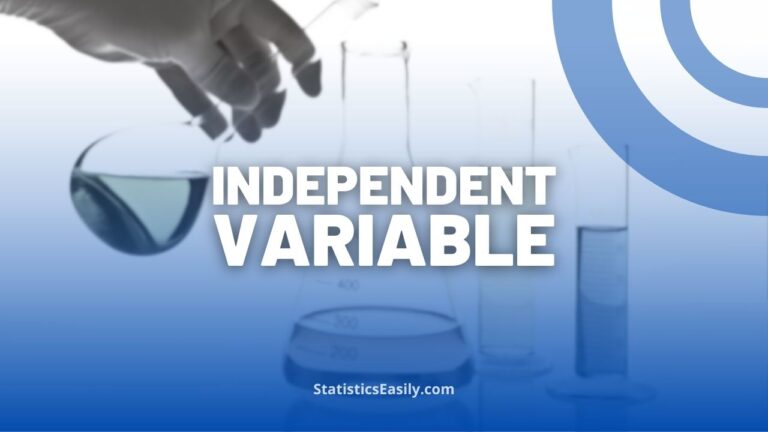ANOVA versus ANCOVA: Breaking Down the Differences
ANOVA and ANCOVA are both statistical techniques used to compare means. The critical difference lies in ANCOVA’s ability to control for the effects of certain continuous variables, known as covariates, which aren’t accounted for in an ANOVA, providing a more accurate comparison of group means.
Introduction
In statistical analysis, two primary methods, Analysis of Variance (ANOVA) and Analysis of Covariance (ANCOVA), have gained prominence for their usefulness in testing hypotheses and analyzing relationships between variables. Both tools are powerful, but understanding when to use ANOVA versus ANCOVA can significantly impact the quality of your data interpretation.
Highlights
- ANOVA assesses the impact of one or more independent categorical variables on a single, continuous dependent variable.
- ANCOVA is a generalized form of ANOVA, introducing covariates to adjust the model.
- The main difference is ANCOVA’s ability to control for the effects of certain variables, which ANOVA doesn’t.
- ANOVA is simple and widely applicable but can’t account for confounding variables.
- ANCOVA adjusts for covariates, providing a more nuanced understanding of variables’ interactions.
Ad Title
Ad description. Lorem ipsum dolor sit amet, consectetur adipiscing elit.
What are ANOVA and ANCOVA?
ANOVA is a statistical tool that assesses the potential significance of the impact of one or more independent categorical variables on a single, continuous dependent variable. It is an extension of the t-test, allowing the analyst to simultaneously evaluate more than two groups’ means.
On the other hand, ANCOVA is a generalized form of ANOVA. It introduces covariates — continuous variables that might affect the dependent variable but aren’t the primary interest. By including covariates, ANCOVA adjusts the model to account for the other factors that influence the response variable, reducing the error variance and improving the precision of the comparisons.
Key Differences between ANOVA and ANCOVA
ANOVA and ANCOVA, while conceptually similar, differ fundamentally in their applications. The critical difference lies in ANCOVA’s ability to control for the effects of certain variables. These covariates aren’t accounted for in an ANOVA.
ANOVA compares the means of different groups to decipher if they all come from the same population. Conversely, ANCOVA adjusts the dependent variable for one or more covariates, aiming to eliminate the influence of confounding variables, giving a better understanding of how the dependent and independent variables are related.
ANOVA: A Practical Example
A botanist wants to test whether three fertilizers lead to different plant growth rates. The botanist grows three batches of plants. Batch A is fertilizer 1, batch B is fertilizer 2, and batch C is fertilizer 3. After several weeks, the botanist measures the growth of the plants in centimeters.
In this case, the botanist could use ANOVA to determine whether growth rates are statistically different between the three batches. The dependent variable is the plant growth rate, while the independent variable is the type of fertilizer used.
ANCOVA: A Practical Example
Now let’s add a twist to our previous scenario. Besides considering the different fertilizers, the botanist also notices that the amount of sunlight each batch receives may affect the plants’ growth. However, sunlight isn’t the main focus of the experiment.
In this case, ANCOVA would be the appropriate method to use. The botanist can treat the amount of sunlight each batch receives as a covariate. This way, the botanist can still investigate the effect of different fertilizers (the primary independent variable) on plant growth (the dependent variable) while controlling for the amount of sunlight (the covariate).
Thus, with ANCOVA, the botanist can evaluate whether different fertilizers have a different effect on plant growth after adjusting for the amount of sunlight each batch receives. This will give a more precise understanding of the fertilizers’ impact, as it removes the variation in growth caused by differences in sunlight exposure.
By using these statistical methods appropriately, the botanist can gain accurate insights into the effects of different fertilizers on plant growth, improving their future experiments and contributing to their field’s understanding.
Advantages and Disadvantages of Each Method
ANOVA’s chief advantage lies in its simplicity and broad applicability. This tool effectively examines the connection between a dependent variable and one or various independent variables. However, its primary drawback is its inability to account for confounding variables.
ANCOVA, meanwhile, compensates for this limitation. By adjusting for covariates, ANCOVA can provide a more nuanced understanding of the variables’ interactions. Nevertheless, its implementation requires a deeper understanding of the data and the relationships between variables, as improper use of covariates can lead to misleading results.
How to Choose Between ANCOVA versus ANOVA for Your Data
Choosing between ANOVA and ANCOVA often hinges on the nature of your data and the specific research question you aim to answer. For example, if you focus on comparing the means of different groups without needing to control for other variables, ANOVA is your go-to tool.
However, suppose there are continuous variables that might affect the dependent variable but aren’t of primary interest in your analysis. In that case, ANCOVA becomes a more appropriate choice. It allows for controlling these variables, providing a more precise comparison between group means.
Remember, properly using these statistical tools requires a thorough understanding of your data, the variables in play, and the relationships between them. Therefore, always analyze your data with care and caution to ensure the integrity of your results.
In summary, ANOVA and ANCOVA offer practical ways to decipher complex datasets. Choosing between ANOVA versus ANCOVA will ultimately depend on the specifics of your data and the nature of your research question. Understanding these techniques, their advantages, limitations, and appropriate usage scenarios can significantly enhance your data analyst or scientist skills.
Ad Title
Ad description. Lorem ipsum dolor sit amet, consectetur adipiscing elit.
Conclusion: ANCOVA versus ANOVA
Choosing the right tool in statistical analysis can mean the difference between a good and a great study. ANOVA and ANCOVA are powerful tools that provide insights into our data, helping us understand the relationships between variables and informing decision-making processes.
ANOVA allows us to compare the means of different groups, offering a straightforward and widely applicable method for hypothesis testing. However, its simplicity also means it doesn’t account for potential confounding variables.
By incorporating covariates into the model, ANCOVA provides a more nuanced view. It offers a way to control for certain variables, helping us isolate the effect of the independent variable(s) of interest on the dependent variable. Yet, its complexity demands a more in-depth understanding of the data and relationships between variables.
Knowing their strengths, weaknesses, and when best used is essential to fully utilize these tools. Whether we choose ANOVA or ANCOVA will depend on the nature of our data and the research questions we aim to answer. Ultimately, we aim to extract our data’s most accurate and valuable insights, guiding us toward informed conclusions and actions.
By understanding the differences and uses of ANOVA versus ANCOVA, we can better navigate the statistical landscape, elevating the quality of our analyses and the validity of our results.
Recommended Articles
Interested in expanding your knowledge on similar topics? Please browse our blog for more relevant and informative articles on data analysis techniques.
- ANOVA: Don’t Ignore These Secrets
- Mastering One-Way ANOVA: A Comprehensive Guide for Beginners
- How to Report One-Way ANOVA Results in APA Style: A Step-by-Step Guide
- ANOVA and T-test: Understanding the Differences and When to Use Each
- One-Way ANOVA Statistical Guide: Mastering Analysis of Variance
- Common Mistakes to Avoid in One-Way ANOVA Analysis
- Histogram Skewed Right: Asymmetrical Data (Story)
- Analysis of Covariance – an overview (External Link)
- ANOVA: Unveiling Statistical Secrets (Story)
Frequently Asked Questions (FAQs)
It’s a statistical method used to compare the means of different groups, assessing the impact of independent categorical variables on a dependent variable.
ANCOVA is a generalized form of ANOVA that introduces covariates to the model, adjusting for variables, not of primary interest.
Unlike ANOVA, ANCOVA can control for the effects of certain continuous variables, known as covariates.
Use ANOVA when comparing group means without the need to control for any other variables.
Use ANCOVA when continuous variables might affect the dependent variable but aren’t the main focus.
The main limitation is its inability to account for confounding variables.
ANCOVA adjusts for covariates, providing a more nuanced understanding of variables’ interactions.
With ANCOVA, you can separate the impact of the independent var. on the dependent variable by managing certain variables.
You need a thorough understanding of your data, the variables in play, and the relationships between them.
A covariate is a continuous variable that might affect the dependent variable but is not the primary focus of your analysis.








